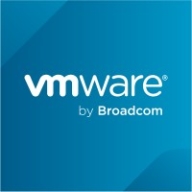

Pentaho Data Integration and Analytics and Spring Cloud Data Flow are prominent in the data integration and microservices orchestration sector. Pentaho leads in data transformation and big data support, thanks to its robust compatibility and open-source community, while Spring Cloud's strength lies in cloud-native microservices orchestration and flexibility.
Features: Pentaho offers extensive compatibility with multiple data sources, a user-friendly graphical interface, and a strong community supporting big data and transformation capabilities. Spring Cloud Data Flow excels in microservices orchestration with seamless cloud integration, particularly leveraging Kubernetes and flexible architecture for tailored solutions. Its microservices-based approach supports diverse integrations efficiently.
Room for Improvement: Pentaho needs to enhance JSON input handling, better error logging, and improve backward compatibility. Users find cloud integration and handling large datasets challenging, with calls for more connectors and improved documentation. Spring Cloud requires UI improvements, expanded language support, and comprehensive documentation to bolster community support and error handling.
Ease of Deployment and Customer Service: Pentaho enables deployment across on-premises, cloud, and hybrid environments, though cloud integration can be challenging. Community support is active, yet enterprise support varies in responsiveness. Spring Cloud excels in private cloud deployment but faces criticism over community support and complex configurations, with technical support needing improved cloud interaction guidance.
Pricing and ROI: Pentaho provides a cost-effective solution with a free Community Edition and reasonably priced Enterprise Edition, ensuring high ROI by reducing ETL development time. Spring Cloud offers an open-source core with optional paid support, which users find cost-effective due to its flexibility in integration and cloud orchestration capabilities, even as explicit pricing details are less emphasized.
| Product | Market Share (%) |
|---|---|
| Pentaho Data Integration and Analytics | 1.7% |
| Spring Cloud Data Flow | 1.2% |
| Other | 97.1% |


| Company Size | Count |
|---|---|
| Small Business | 17 |
| Midsize Enterprise | 16 |
| Large Enterprise | 25 |
| Company Size | Count |
|---|---|
| Small Business | 3 |
| Midsize Enterprise | 1 |
| Large Enterprise | 5 |
Pentaho Data Integration stands as a versatile platform designed to cater to the data integration and analytics needs of organizations, regardless of their size. This powerful solution is the go-to choice for businesses seeking to seamlessly integrate data from diverse sources, including databases, files, and applications. Pentaho Data Integration facilitates the essential tasks of cleaning and transforming data, ensuring it's primed for meaningful analysis. With a wide array of tools for data mining, machine learning, and statistical analysis, Pentaho Data Integration empowers organizations to glean valuable insights from their data. What sets Pentaho Data Integration apart is its maturity and a vibrant community of users and developers, making it a reliable and cost-effective option. Pentaho Data Integration offers a range of features, including a comprehensive ETL toolkit, data cleaning and transformation capabilities, robust data analysis tools, and seamless deployment options for data integration and analytics solutions, making it a go-to solution for organizations seeking to harness the power of their data.
Spring Cloud Data Flow is a toolkit for building data integration and real-time data processing pipelines.
Pipelines consist of Spring Boot apps, built using the Spring Cloud Stream or Spring Cloud Task microservice frameworks. This makes Spring Cloud Data Flow suitable for a range of data processing use cases, from import/export to event streaming and predictive analytics. Use Spring Cloud Data Flow to connect your Enterprise to the Internet of Anything—mobile devices, sensors, wearables, automobiles, and more.
We monitor all Data Integration reviews to prevent fraudulent reviews and keep review quality high. We do not post reviews by company employees or direct competitors. We validate each review for authenticity via cross-reference with LinkedIn, and personal follow-up with the reviewer when necessary.